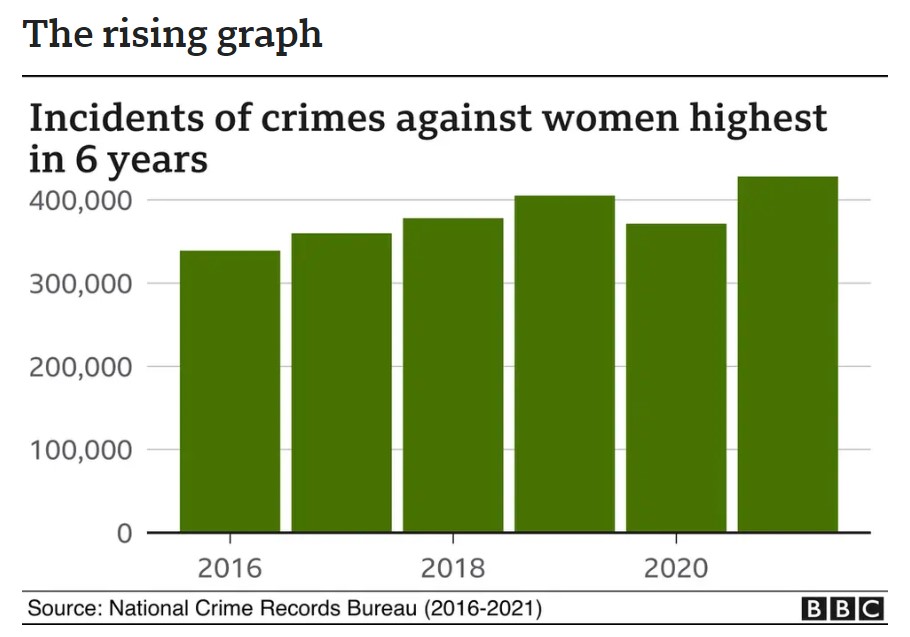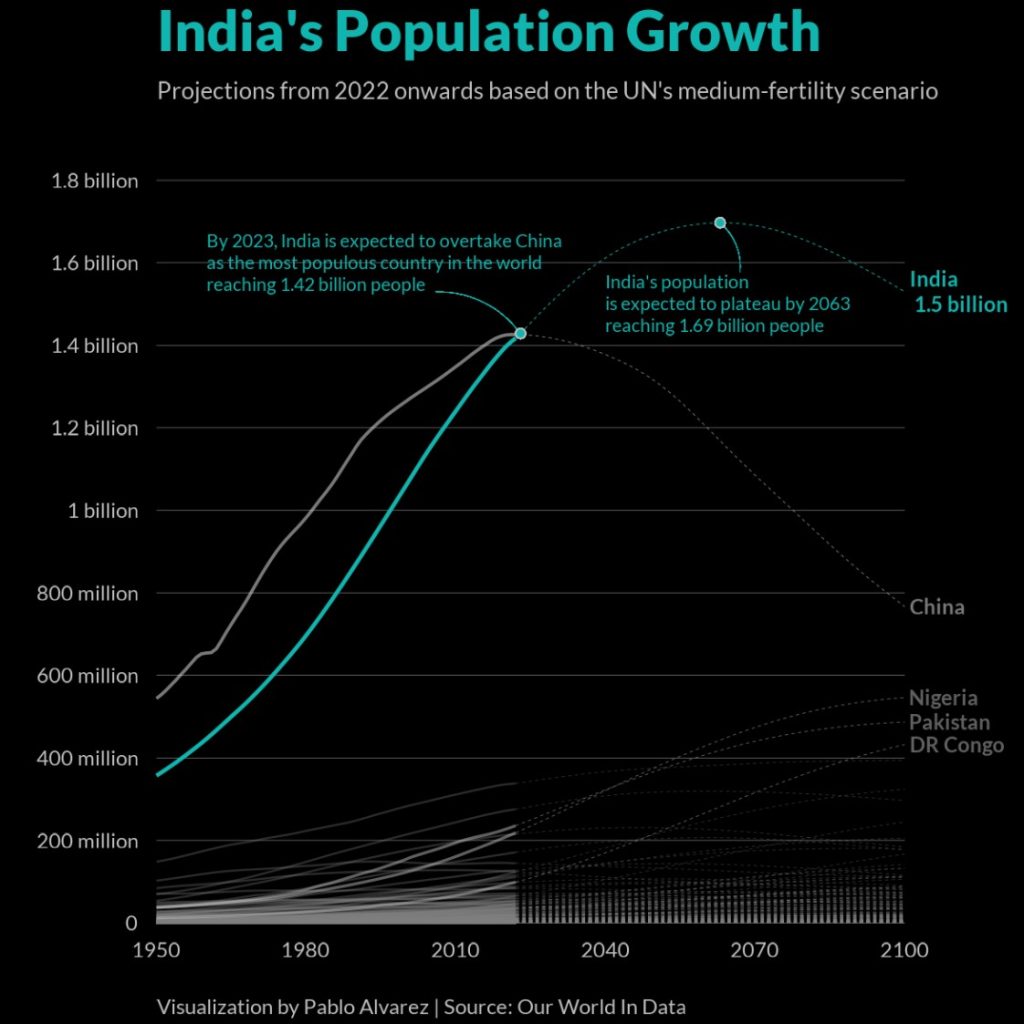CONTENTS
- The Issue of Institutional Violence, Addressing it
- India’s Population: A Liability or an Untapped Asset with Immense Potential
The Issue of Institutional Violence, Addressing it
Context:
India’s electoral system reveals a striking contrast. In the world’s largest democratic exercise, 642 million voters participated, with women making up more than half. Yet, in a nation where 90 rapes are reported daily, few of the 2,823 election candidates prioritized women’s safety in their agendas. For those who did, their efforts were inconsistent and failed to address the deep-rooted institutional violence faced by millions of survivors every day.
Relevance:
- GS1- Role of Women and Women’s Organization
- GS2- Welfare Schemes for Vulnerable Sections of the population by the Centre and States and the Performance of these Schemes
Mains Question:
Institutional violence against women exists at various latent and manifest levels. Discuss. Also analyse why India has failed to end violence against women despite strong legislations. (15 Marks, 250 Words).
Misconceptions About Gender-based Violence:
- Gender-based violence is often mistakenly seen as a singular act of violence, typically involving an intimate partner, which politicians supposedly cannot address.
- However, a white paper based on over 200 hours of interviews with experts revealed that the institutional violence survivors endure can be more prolonged and severe than the violence itself. Here is where politicians and voters can make a crucial impact.
- Institutional violence begins even before a survivor reports the crime, affecting their decision to come forward.
- For instance, a 2019 report by J-PAL, a global policy think tank, found that 39% of officers in India believe that gender-based violence complaints are generally unfounded.
- With a harsh police system, a lengthy and traumatic judicial process, and little hope for justice, a vicious cycle of violence persists.
Women Seeking Justice:
- Women often only seek justice when their situation becomes unbearable. Despite half of the women facing intimate partner violence, India has one of the world’s lowest divorce rates at 1%.
- A report estimated that 77% of Indian women remain silent about the violence they face, even to close family.

- Ranjita, founder of Samarthya, a Denotified Nomadic Tribal youth and women-led organization, shared an incident where they helped a woman file a complaint at a police station.
- The police attempted to dissuade her, passed them between different stations, and accused them of coercion.
- They later dismissed the case, claiming jurisdictional issues since the woman was from Karnataka. These are the obstacles encountered within the justice system.
Challenges in Rural India:
- This stark reality includes nearly 50% of women experiencing domestic violence, and two-thirds of Dalit women facing sexual violence in their lifetimes. Despite this, both political parties and voters largely ignored these issues.
- In rural India, the male and upper-caste dominated panchayats create additional hurdles for women seeking justice.
- Divorce is rarely considered an option, as India’s court system has a backlog of 40 million cases, which disproportionately affects survivors of gender-based violence, especially those from marginalized communities facing systemic inequities related to caste, literacy, and geography.
- “Getting justice in India can lead to a lot of injustice,” says Ranjita.
Way Forward:
- As a nation, we’ve lost hope. This is where bureaucrats and elected officials can step in to make a difference by establishing survivor-centric institutions.
- For years, social impact organizations have taken on the responsibility of training police and judicial system members to adopt a trauma-informed approach.
- For instance, Vanangna, a women-led organization in Bundelkhand, trains government officials, including police and law enforcement, on women-centric and survivor-centric processes.
- We need to apply these lessons nationally and draw on the insights of violence survivors, particularly those from historically marginalized communities, to help design and validate a fair system.
- India has robust domestic violence laws, but their implementation has been severely lacking due to ineffective officials and outdated processes.
- This is not surprising, as these officials are part of a society that has often tolerated violence.
- We need a national reimagining and improvement of our justice institutions, utilizing the insights from organizations like Vanangna to make them trauma-informed and focused on healing.
- We also need more data and stories to be publicly shared. For decades, institutional violence has been exacerbated by a lack of data, making it impossible to truly understand how often and how many women are being denied justice.
- While recent updates to criminal law procedures emphasize timeliness and ease of access through digital means, they must be accompanied by gender-sensitive training and monitoring measures to ensure that staff adopt a trauma-informed approach when working with survivors of violence.
- Voters and politicians have the power to highlight this issue and make a significant difference.
- For instance, the widespread government campaign to promote girls’ education has led to a significant increase in school enrollment among girls.
Conclusion:
To see a similar shift in our country’s institutions, where survivors of violence no longer fear repercussions when seeking justice, we, as voters, must demand our rights. Our women deserve safety and dignity, and we must fight for it.
India’s Population and Sustainability
Context:
There is much discussion and debate surrounding India’s immense population. Many are expressing concerns that this growing population could become a significant challenge for the nation’s future. As of January 2024, India’s population stood at 1.44 billion and has likely increased slightly since then. Over the past decade, the population has been expanding at a rate of nearly 1% per year. Some argue that unless this growth is controlled, India cannot achieve economic progress or become a developed nation, as a large population is often seen as a major obstacle to national growth and development.
Relevance:
- GS1- Population and Associated Issues
- GS3- Indian Economy and issues relating to Planning, Mobilization of Resources, Growth, Development and Employment.
Mains Question:
As the world population nears 8 billion, it becomes imperative to reassess the impact of population dynamics on sustainability and progress. Discuss. (15 Marks, 250 Words).

The Implications of Population Growth:
- To truly understand the implications of population growth, we must examine the issue from a broader, global standpoint.
- The world’s population is now close to 8 billion, having tripled over the last century.
- The real debate about whether a population is an asset or a burden revolves around how we currently utilize global resources and the vast inequalities in resource ownership.
- Unlike manufacturing goods in a factory, humans cannot simply produce offspring at will.
- Humans, much like animals, engage in reproduction naturally, which is evidenced by declining fertility rates in many regions despite advancements in modern medical science.
- Scientists and medical experts can assist with the fertilization of reproductive cells but cannot guarantee conception at will.
Increase in Life Expectancy:
- Today, the average global life expectancy is nearly double what it was 200 years ago. However, this progress has come at the expense of the environment.
- We have heavily relied on chemical fertilizers for crops, which have degraded soil quality and fertility.
- The widespread use of chemically formulated drugs and vaccines has also revealed serious, insidious side effects over time. But we cannot continue indefinitely without seriously compromising sustainability.
- Currently, humans are exploiting and depleting global resources more than ever before, prioritizing human comforts at the environment’s expense.
- While life expectancy is increasing, it often comes at the expense of life quality.
- We fight infectious diseases with potent chemical drugs, which in turn can lead to chronic illnesses and new ailments previously unknown.
Way Forward:
- Unknowingly, humans are moving toward an unsustainable way of living. It’s important to return to the fundamental metaphysical truths of existence.
- The key is to know how to use this human resource productively and effectively. By following agricultural practices outlined in Vedic sciences and using technologies based on these teachings, we can maintain soil quality and fertility, ensuring abundant harvests season after season.
- Through strictly organic farming, we can protect our environment and ecosystem.
- By adhering to Ayurvedic principles, we can achieve good health and long life without relying on synthetic chemical drugs.
- We must change our systems and ways of living to address the severe wealth disparity, where 20% of the global population controls 80% of global resources.
Conclusion:
Our drive for self-interest, fueled by capitalism and greed, has led to the current situation. Population should be seen as an asset, and it will be if we shift our lifestyles to align with nature and adopt eco-friendly technologies as outlined in ancient Vedic scriptures.



